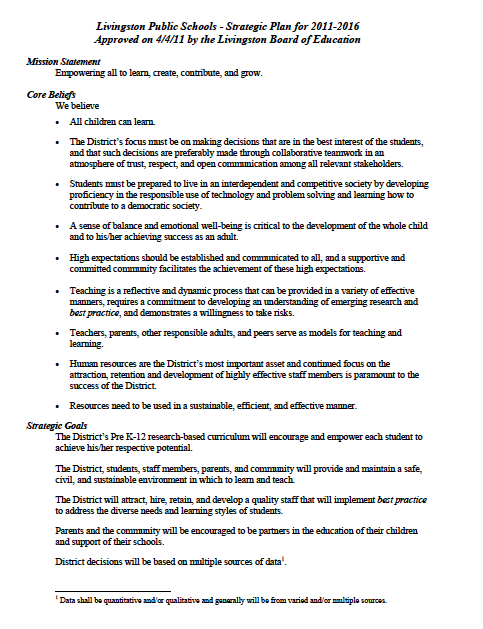Profound Connections
By Chris Bickel
I graduated from the New Jersey Learns program in 2009. I didn’t know it then, but my understanding of sustainability as it related to environmental literacy would drastically change. I’ve moved away from compartmentalizing my ideas and actions, seeing instead their inter-connections and interdependence in a more fluid way. Now, I look for broader and higher level ideas and stewardship. For example, early on I co-chaired two large environmental fairs and a compact fluorescent bulb distribution in the township of Livingston, NJ. I thought each separate event was a success. I “checked” it off my list and told myself, “You are doing your part, Chris.” However, NJ Learns taught me to think “upstream” and go to the source of the problem. I decided to bring my learning back to my position as a Supervisor of Social Studies for grades K-12 in Livingston NJ.
Fortunately for me, the township of Livingston is a certified sustainable community and the school district I work within is very supportive of green initiatives. Two years ago, I had an unbelievable opportunity to rewrite our district’s sixth grade curriculum on world geography. The team of teachers and I built sustainability into the document as one of our course themes. Now, every sixth grade student in our district is exposed to the knowledge and skills necessary for sustainability. I was extremely happy with this success, but it still wasn’t enough. I had to keep going “upstream” to the larger problem. For me, the issue wasn’t our curriculum. We needed to somehow infuse education for sustainability at every grade level throughout the district. Students need to see the “relatedness” of sustainability in every subject, not just social studies. As I struggled with the process of how to make this happen, I received an invite to be part of the district’s strategic planning committee. I quickly said “Yes” to the invite and served on the committee with Livingston parents, residents, administrators, supervisors, and other leaders in the district and township.
During the course of our strategic planning meetings, I was more than ready to propose and defend the need for EfS in the plan. The entire committee was supportive of the initiative, I believe, because of the powerful arch of sustainability to encompass all groups, topics, and interests.
 Click Here to Read the Strategic Plan
Click Here to Read the Strategic Plan
Thanks to the strategic planning committee members, sustainability is now built into our plan. Sustainability is weaved into three “strands” topically called “What Students Learn”, “Technology”, and “Facilities.” Additionally, “Sustainability” has been infused into one of our district “Core Beliefs.” The various references to sustainability throughout the plan provide school and community stakeholders an invaluable guiding light to follow as we all endeavor to re-envision our world for a sustainable future.
The “connections” focus of this newsletter is profound as it relates to my work. As I look at my last five years, all that I’ve seen and what has flowed to me from so many different sources, I can’t help but notice the thread connecting the people I have met who helped me get to where I am today. My position at Kittatinny Regional High School led me to Livingston School District which led me to NJ Learns. From there, I was able to do the work I’m doing in Livingston on the strategic plan. These simple “connections” were not coincidental but mere fate. For without one, the others may not have been. I am thankful to NJ Learns for giving me the language to speak “sustainability.” A language, I believe, that is felt in the heart and accessible to all through a variety of doors. My continued role is to keep meeting people at the door and welcoming them home.
